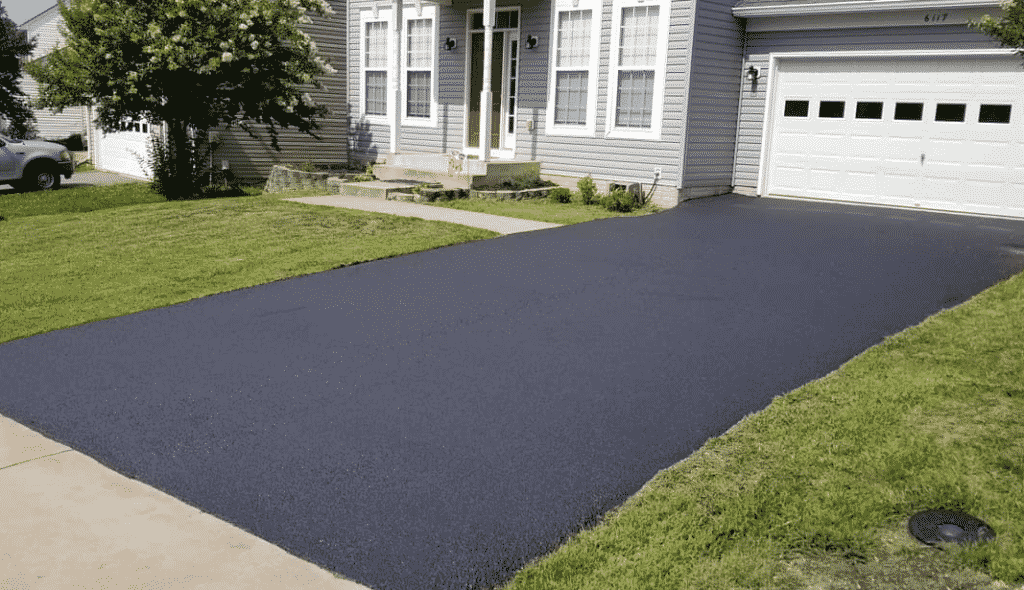Discover the Power of Business Car Park Leading and Asphalt Sealing
Discover the Power of Business Car Park Leading and Asphalt Sealing
Blog Article
Warm Mix Asphalt: A Lasting Service for Sidewalk
Warm Mix Asphalt (HMA) has actually become a leading sustainable choice for pavement solutions, providing a myriad of ingenious modern technologies and ecological benefits. Its capacity to reduce and recycle materials energy intake offers an engaging case for its fostering in road construction jobs. Moreover, the lasting efficiency and resilience of HMA make it a favored option for infrastructure development. As the demand for eco-friendly construction techniques expands, exploring the nuances of HMA's sustainability can give beneficial understandings into the future of pavement options.
Environmental Advantages of Warm Mix Asphalt

Furthermore, Warm Mix Asphalt helps to alleviate city warmth island effects. Its dark shade takes in sunshine, decreasing the amount of heat mirrored back right into the ambience contrasted to lighter-colored sidewalks. This can lower ambient temperatures in city areas, lowering the demand for cooling and ultimately minimizing power intake.
In enhancement, Warm Mix Asphalt adds to boosted stormwater management. Its permeable nature allows water to reenergize and penetrate the pavement groundwater materials, minimizing drainage and the risk of flooding. These ecological benefits make Hot Mix Asphalt a sustainable choice for paving roadways and freeways.
Power Effectiveness in HMA Production
Is energy performance a critical consider the manufacturing of Hot Mix Asphalt (HMA)? Definitely. Energy plays a substantial role in the production of HMA, affecting both expense and ecological sustainability. One crucial facet of power effectiveness in HMA production is the use of cozy mix asphalt (WMA) modern technologies (hot mix asphalt). WMA allows for the mixing and positioning of asphalt at reduced temperature levels contrasted to typical hot mix asphalt, resulting in minimized energy intake throughout manufacturing. This process not just reduces gas use but also reduces greenhouse gas discharges, making it a much more eco-friendly option.
Moreover, developments in plant innovations have actually led to even more energy-efficient HMA production procedures. Modern plants are developed with functions like recycled asphalt sidewalk (RAP) processing capacities, effective heater systems, and improved insulation, all adding to power savings. By enhancing power use in HMA production, the market can lower its carbon impact while maintaining premium sidewalk materials. Power efficiency is, for that reason, a vital factor to consider in guaranteeing the sustainability of Hot Mix Asphalt manufacturing.
Recyclability of Warm Mix Asphalt
The recyclability of Hot Mix Asphalt (HMA) is a critical aspect of its sustainability and long-term ecological impact. HMA is among one of the most recycled products in the United States, with over 100 million loads of recovered asphalt sidewalk (RAP) being reused every year in new pavement building. Reusing HMA supplies several environmental benefits, such as reducing Source the need over at this website for virgin materials, lowering power intake throughout manufacturing, and reducing the quantity of waste sent out to land fills.
The procedure of reusing HMA entails crushing the existing sidewalk, crushing it right into smaller items, and mixing it with new aggregate and asphalt binder to develop a recycled mix. Generally, the recyclability of HMA plays a considerable function in promoting lasting methods within the pavement industry.

Long-Term Efficiency of HMA
Asphalt sidewalks demonstrate longevity and strength over an extensive period, mirroring the long-term performance of Hot Mix Asphalt (HMA) In addition, developments in HMA innovation, such as the usage of polymer-modified binders and warm mix asphalt, have actually further improved the toughness and durability of HMA sidewalks. By focusing on quality building and construction and upkeep practices, HMA continues to confirm itself as a economical and lasting option for durable pavement infrastructure.

HMA: Longevity and Sustainability
Showing both resilience and sustainability, Hot Mix Asphalt (HMA) has actually become a cornerstone in the building and construction of durable sidewalk facilities - commercial parking lot paving. HMA's longevity comes from its capacity to stand up to hefty tons, extreme climate problems, and high traffic quantities, making it a reputable selection for roadways, highways, and flight terminal runways. The structure of HMA, which typically includes accumulations, binder, and filler, plays a critical function in boosting its durability and resistance to deterioration
Moreover, HMA's sustainability lies in its recyclability and energy-efficient production procedure. The ability to reuse reclaimed asphalt sidewalk (RAP) in brand-new HMA mixtures lowers the need for virgin materials and reduces the environmental influence of sidewalk construction and maintenance. In addition, the power efficiency of creating HMA exists in its reduced mixing temperature levels contrasted to other sidewalk materials, leading to decreased energy intake and greenhouse gas emissions.
Verdict
In final thought, hot mix asphalt (HMA) uses a lasting service for pavement with its eco pleasant qualities. HMA's recyclability, energy efficiency in manufacturing, and long-term sturdiness make it an environment-friendly option for roadway building and construction.
HMA is one of the most recycled products in the United States, with over 100 million loads of recovered asphalt pavement (RAP) being reused every year in brand-new sidewalk construction.The process of recycling HMA involves grating the existing sidewalk, crushing it into smaller sized items, and blending it with brand-new aggregate and asphalt binder to produce a recycled mix.Asphalt pavements demonstrate sturdiness and resilience over a prolonged period, reflecting the long-term efficiency Homepage of Warm Mix Asphalt (HMA) Furthermore, improvements in HMA innovation, such as the usage of polymer-modified binders and warm mix asphalt, have even more enhanced the toughness and longevity of HMA pavements. The capacity to reuse recovered asphalt sidewalk (RAP) in new HMA blends reduces the demand for virgin products and decreases the ecological influence of pavement construction and maintenance.
Report this page